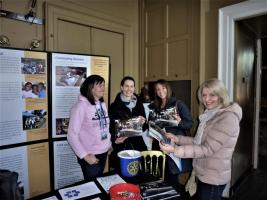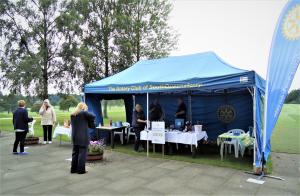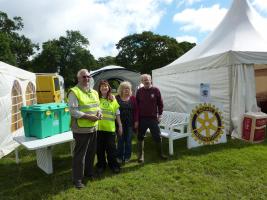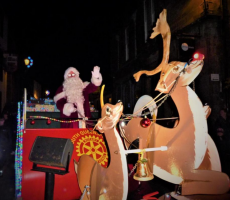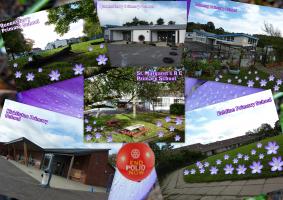Ms Angela Gannon St Kilda - the last and outmost isle
Thu, May 19th 2016 at 6:45 pm - 8:45 pm
Angela Gannon St Kilda - the last and outmost isle
Raffle - Graham Leith.
Raffle - Craig Mackenzie.
Reception - Ed Kelly / Jim McCulloch.
St Kilda, the last and foremost isle, was the subject at the Rotary Club of South Queensferry on Thursday 19th May. Speaker Angela Gannon, an archaeologist with Historic Environment Scotland, visited the islands which lie 45miles west of the Hebrides twice a year for three years to survey and map the remains of the inhabitants. Only MoD staff and visiting naturalists studying the remarkable bird life now live on St Kilda. Contrary to popular myth, the last 25 permanent residents were not evicted but petitioned to leave, and were resettled on the mainland in 1930. In any remote location which has been inhabited since at least the iron age, successive societies cultivate and build on the same ground, often almost obliterating what has gone before. The remains of 18th and 19th century cottages are clear, and modern surveying techniques identified a much older field system underlying the traditional pattern of crofts. Small stone storehouses known as cleits appear all over Hirta, the largest island. Of unknown date, some of these unique buildings include stones bearing early Christian crosses. Few ancient artefacts have been found except for iron age axe heads and shards of neolithic pottery, but analysis of seeds show cereal was being cultivated on St Kilda from 3,000 BC. Angela Gannon said that in her recent book she hoped to challenge myths of St Kilda's isolation arguing that there is ample evidence of constant communication with the Western Isles. Asked where the St Kildans were resettled, Angela said most got jobs with the Forestry Commission in Lochaline, which was ironic for people who had never seen a tree.
Visitor John Cumming, President of Portobello Rotary Club, conveyed the good wishes of his members to President Kate Gibb.
'What We Do' Main Pages:
